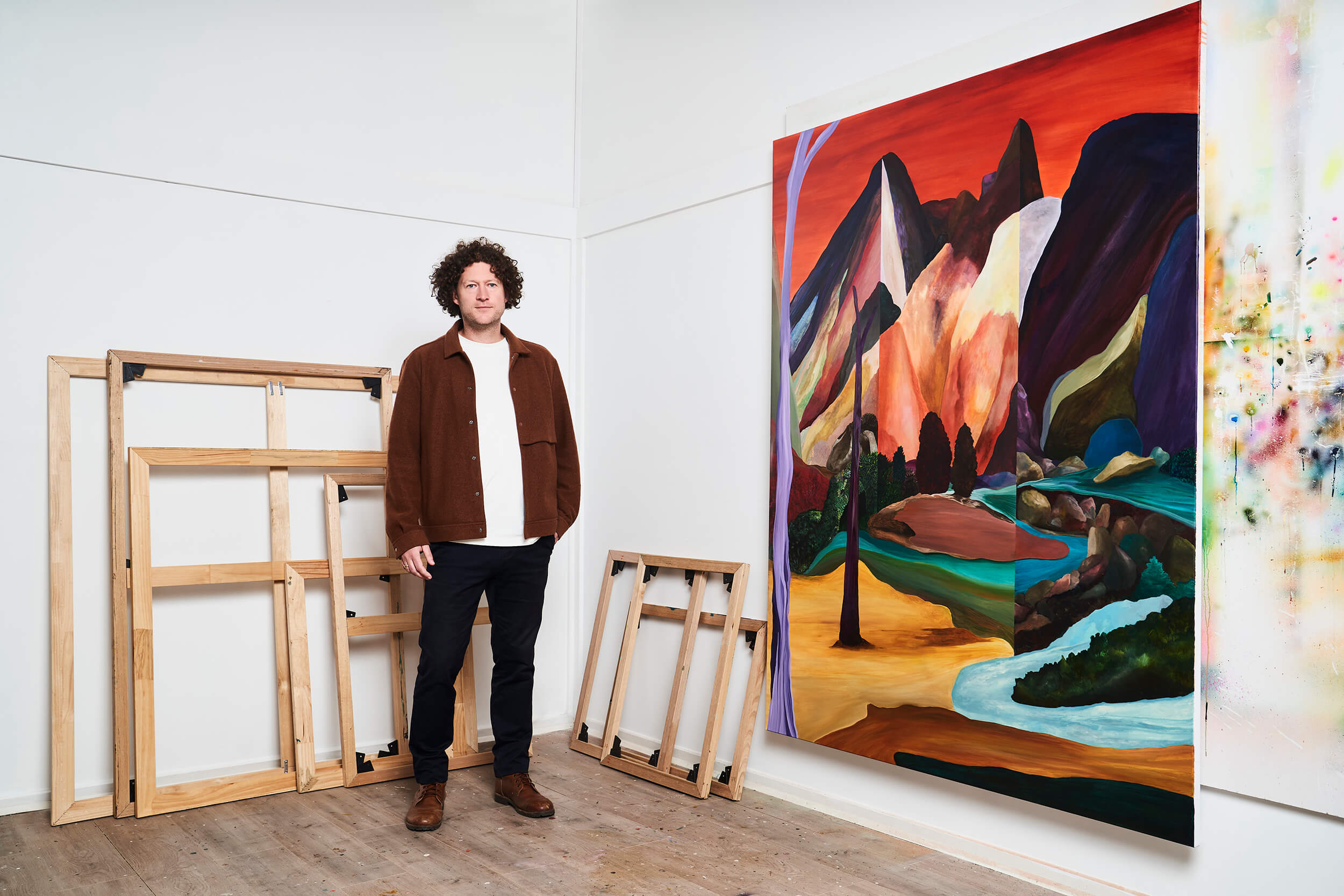
Ross Taylor in the studio, Macedon Ranges, Victoria, AU, 2024.
September 10-October 9, 2024
Alexander Berggruen is pleased to present Ross Taylor: A knowing History. This exhibition will open Tuesday, September 10, 2024 with a 5-7 pm reception at the gallery (1018 Madison Avenue, Floor 3, New York, NY).
Ross Taylor (b. 1982, Northumberland, UK) received a BA in fine art at University of Newcastle Upon Tyne, UK and also studied at Academie De Bildenden Kunste in Munich, DE. Taylor has been a finalist for Sovereign Asian Art Prize, Lyn McCrea Drawing Prize, Perimeter Book Prize, Paul Guest Prize, and Sunshine Coast Prize, among other accolades. He has held residencies at What’s Missing? Initiatives; Globe Gallery; North Shields, England; and Art Space Tetra, Fukuoka, Japan. His work has been exhibited internationally including at: Alexander Berggruen, New York, NY; Scott Miller Projects, Birmingham, AL; BEERS London, UK; Villazan, Madrid, ES; Latrobe Art Institute, Bendigo, AU; Institute of New Media, Frankfurt, GE; Sophie Gannon Gallery, Melbourne, AU; Bendigo Art Gallery, Bendigo, AU; SADE Los Angeles, CA; Aga Khan, London, UK; and Caloundra Regional Gallery, Queensland, AU. Taylor’s work is held in the public collections of Bendigo Art Gallery, Bendigo, AU; Ballarat Art Gallery, Ballarat Central, AU; and Horsham Art Gallery, Vic, AU. The artist lives and works in the Macedon Ranges, Victoria, AU.
This is Taylor’s first solo show with the gallery, following his inclusion in the gallery’s group show The Natural World: Part II (March 9-April 13, 2022), and in the gallery’s presentation at The Dallas Art Fair (April 20-23, 2023).
Ross Taylor: A knowing History will run at Alexander Berggruen (1018 Madison Avenue, Floor 3) from September 10-October 9, 2024. For all inquiries, please contact the gallery at info@alexanderberggruen.com.